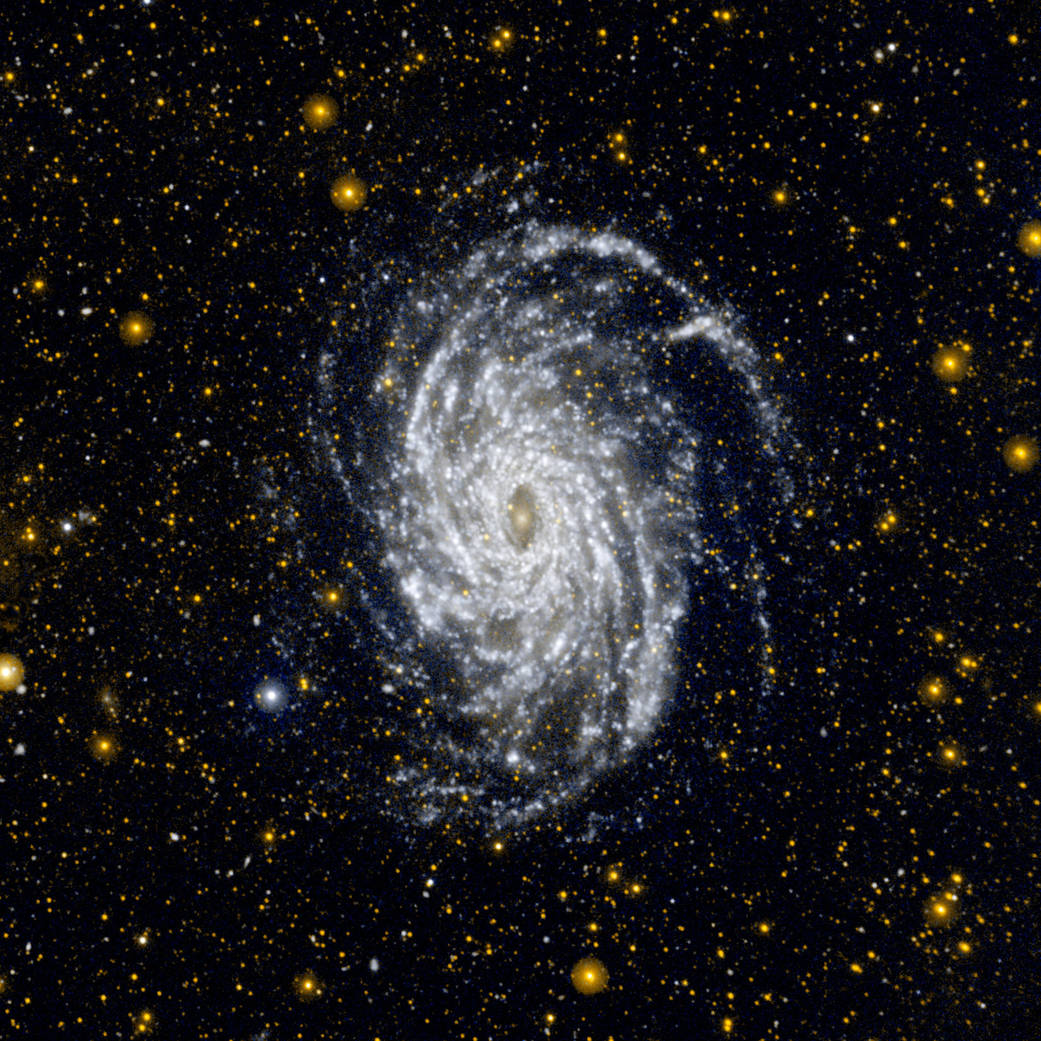This image from NASA’s Galaxy Evolution Explorer shows NGC 6744, one of the galaxies most similar to our Milky Way in the local universe. This ultraviolet view highlights the vast extent of the fluffy spiral arms, and demonstrates that star formation can occur in the outer regions of galaxies.
The galaxy is situated in the constellation of Pavo at a distance of about 30 million light-years.
NGC 6744 is bigger than the Milky Way, with a disk stretching 175,000 light-years across. A small, distorted companion galaxy is located nearby, which is similar to our galaxy’s Large Magellanic Cloud. This companion, called NGC 6744A, can be seen as a blob in the main galaxy’s outer arm, at upper right.
On June 28, 2013, NASA turned off its Galaxy Evolution Explorer (GALEX) after a decade of operations in which the venerable space telescope used its ultraviolet vision to study hundreds of millions of galaxies across 10 billion years of cosmic time.
Highlights from the mission’s decade of sky scans include:
— Discovering a gargantuan, comet-like tail behind a speeding star called Mira.
— Catching a black hole “red-handed” as it munched on a star.
— Finding giant rings of new stars around old, dead galaxies.
— Independently confirming the nature of dark energy.
— Discovering a missing link in galaxy evolution — the teenage galaxies transitioning from young to old.
The mission also captured a dazzling collection of snapshots, showing everything from ghostly nebulas to a spiral galaxy with huge, spidery arms.
Image credit: NASA/JPL-Caltech


























